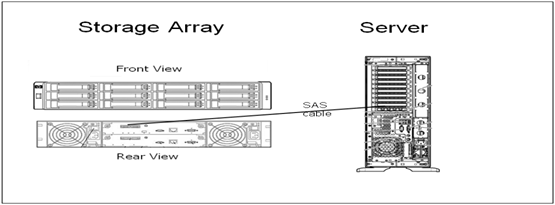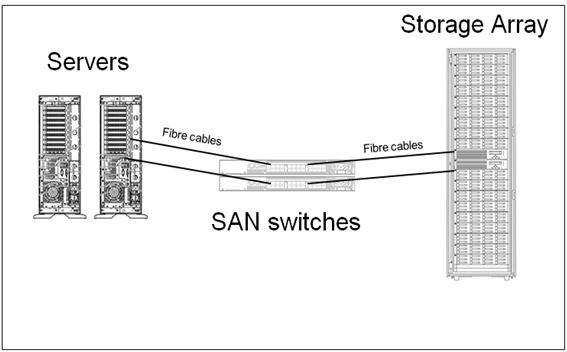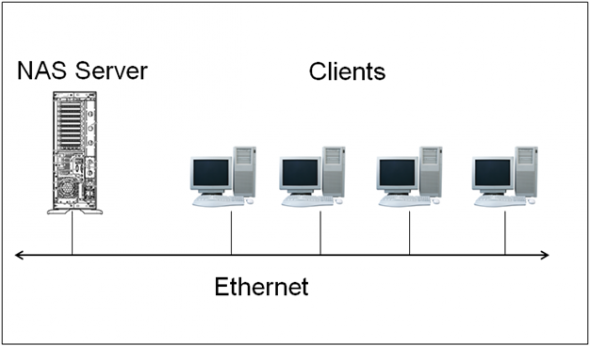|
Article Type:
|
Process
|
|
Product:
|
Other
|
|
Product Version:
|
|
|
Component:
|
|
|
Device Brands:
|
|
|
Created:
|
21-Dec-2012 11:35:27 AM
|
|
Last Updated:
|
|
Exploring Windows Storage Technologies: DAS, NAS and SAN-Based Solutions
Exploring Windows Storage Technologies: DAS, NAS and SAN-Based SolutionsExternal Article - Not written by Senstar For copyright purposes, please read the article at the external link given below. by Bruce Mackenzie-Low - February 20, 2011 from http://www.petri.co.il/das-nas-san-storage-technologies.htm Introduction: This article will explore the major storage architectures including DAS (Direct Attached Storage), NAS (Network Attached Storage) and SAN (Storage Area Networks), discussing their benefits and tradeoffs. Microsoft Windows storage technologies have evolved over the years to take advantage of new offerings from storage vendors. Internal disk drives have advanced from a few hundred megabytes to over a terabyte. The traditional IDE drives have been joined by SCSI and SATA hard disks offering a variety of options when configuring Windows storage. When considering the different storage options, you need to keep several things in mind. First, how much storage capacity will you need? Will you be able to add additional storage on-demand? How about data availability – will nightly backups suffice or do you need redundant storage arrays? And finally, how much are you willing to pay for your storage solutions? The answers to these questions will help you to decide what Windows storage technology is right for you. DAS (Direct Attached Storage): When Windows servers leave the factory, they can be configured with several storage options. Most servers will contain 1 or more local disk drives which are installed internal to the server’s cabinet. These drives are typically used to install the operating system and user applications. If additional storage is needed for user files or databases, it may be necessary to configure Direct Attached Storage (DAS). DAS is well suited for a small-to-medium sized business where sufficient amounts of storage can be configured at a low startup cost. The DAS enclosure will be a separate adjacent cabinet that contains the additional disk drives. An internal PCI-based RAID controller is typically configured in the server to connect to the storage. The SAS (Serial Attached SCSI) technology is used to connect the disk arrays as illustrated in the following example. 
As mentioned, one of the primary benefits of DAS storage is the lower startup cost to implement. Managing the storage array is done individually as the storage is dedicated to a particular server. On the downside, there is typically limited expansion capability with DAS, and limited cabling options (1 to 4 meter cables). Finally, because the RAID controller is typically installed in the server, there is a potential single point of failure for the DAS solution. SAN (Storage Area Networks): With Storage Area Networks (SAN), we typically see this solution used with medium-to-large size businesses, primarily due to the larger initial investment. SANs require an infrastructure consisting of SAN switches, disk controllers, HBAs (host bus adapters) and fibre cables. SANs leverage external RAID controllers and disk enclosures to provide high-speed storage for numerous potential servers. The main benefit to a SAN-based storage solution is the ability to share the storage arrays to multiple servers. This allows you to configure the storage capacity as needed, usually by a dedicated SAN administrator. Higher levels of performance throughput are typical in a SAN environment, and data is highly available through redundant disk controllers and drives. The disadvantages include a much higher startup cost for SANs, and they are inherently much more complex to manage. The following diagram illustrates a typical SAN environment. 
See related article on Utilizing Windows 2008 Failover Clustering with SAN NAS (Network Attached Storage): A third type of storage solution exists that is a hybrid option called Network Attached Storage (NAS). This solution uses a dedicated server or “appliance” to serve the storage array. The storage can be commonly shared to multiple clients at the same time across the existing Ethernet network. The main difference between NAS and DAS and SAN is that NAS servers utilize file level transfers, while DAS and SAN solutions use block level transfers which are more efficient. NAS storage typically has a lower startup cost because the existing network can be used. This can be very attractive to small-to-medium size businesses. Different protocols can be used for file sharing such as NFS for UNIX clients and CIF for Windows clients. Most NAS models implement the storage arrays as iSCSI targets that can be shared across the networks. Dedicated iSCSI networks can also be configured to maximize the network throughput. The following diagram shows how a NAS configuration might look. 
Summary: In summary, there are many types of storage solutions that can be used in a Windows environment. The main 3 types consist of DAS, SAN and NAS. The major differences between the types are startup costs, whether the storage is shared or dedicated, and whether additional storage can be added on-demand. Different technologies are also used to connect and control the storage such as SAS, Fibre and iSCSI. Continue to explore these storage technologies with related articles on Understanding the Windows Storage Disk Architecture, Utilizing Windows 2008 Failover Clustering with SAN, Windows Failover Cluster and iSCSI Technology, and Windows Troubleshooting Tools for Storage Performance Problems. These articles will expand your storage knowledge of the DAS NAS SAN Storage Technologies by focusing on the nuts and bolts of implementing storage solutions in a Windows environment. http://www.petri.co.il/das-nas-san-storage-technologies.htm
|
Average rating:
|
|
|
|
Please log in to rate.
|
|
Rated by 0, Viewed by 10647
|
|